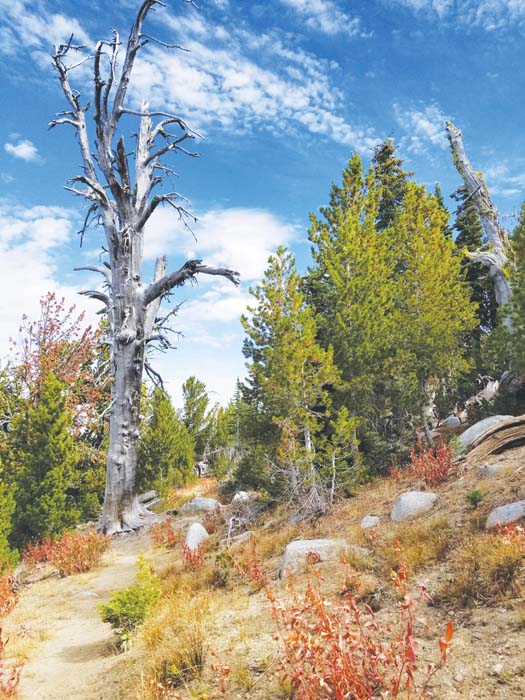Learn about whitebark pines
Published 11:14 am Friday, September 27, 2024

- Whitebark pines are five-needle pine trees that grow at high elevations. The Whitebark Pine Ecosystem Foundation is inviting the public to learn more about the tree and conservation efforts at a meeting on Oct. 9 in Baker City.
BAKER CITY — A conference about the health and restoration of whitebark pines is coming to Baker City Oct. 9-11, and there are several chances for the community to learn about the endangered tree species.
Whitebark pines are five-needle pine trees that grow at high elevations, and often twist into unique shapes due to extreme weather conditions.
Every year, the Whitebark Pine Ecosystem Foundation holds an annual conference in a place with good access to whitebark pines for a field trip, said Julee Shamhart, executive director.
“The best places to encounter whitebark pines are ski areas because there are roads that are maintained,” she said.
The conference includes a free presentation open to the public on Wednesday, Oct. 9, from 7:30-9 p.m. at Churchill School, 3451 Broadway St. in Baker City.
Shamhart said the talk will include information about a program called “Whitebark Pine Friendly Ski Area,” and the local restoration work underway at Anthony Lakes by the U.S. Forest Service, in collaboration with Anthony Lakes Outdoor Recreation Association.
“Because ski areas provide easy access to high elevation whitebark pine forests, most of the aspects of whitebark pine conservation can happen there,” she said.
The Forest Service has caged cones for seed collections, planted seedling, installed education signs and is monitoring whitebark pines at the ski area.
Whitebark pine cones are collected to grow seedlings with the goal, Shamhart said, of identifying trees that are resistant to blister rust, which is a major threat to whitebark pines, along with the mountain pine beetle.
Blister rust is a fungus that was introduced through an ornamental plant more than 100 years ago, she said.
“It’s been spreading throughout forests. Whitebark pine has been hit really hard by it,” she said.
Across the range where whitebarks grow, she said more than 50% of trees are dead, and in some areas that number is as high as 90%.
The whitebark pine was declared a threatened species in January 2023.
“Efforts are starting to ramp up to restore and conserve the species,” she said.
Relying on a bird
To reproduce, whitebark pines rely on the Clark’s nutcracker, which harvests the seeds to cache for a later meal. The birds, however, forget about some seeds, which sprout into trees.
“One nutcracker can plant tens of thousands seeds in a year,” Shamhart said. “It remembers accurately where they are, but forget a few.”
The foundation
According to the website, the Whitebark Pine Ecosystem Foundation was founded in 2001, and is the only U.S.-based, nonprofit organization uniquely focused on conserving whitebark pine and other high-elevation, five-needle white pine ecosystems in western North America.
For more information, visit whitebarkfound.org.





